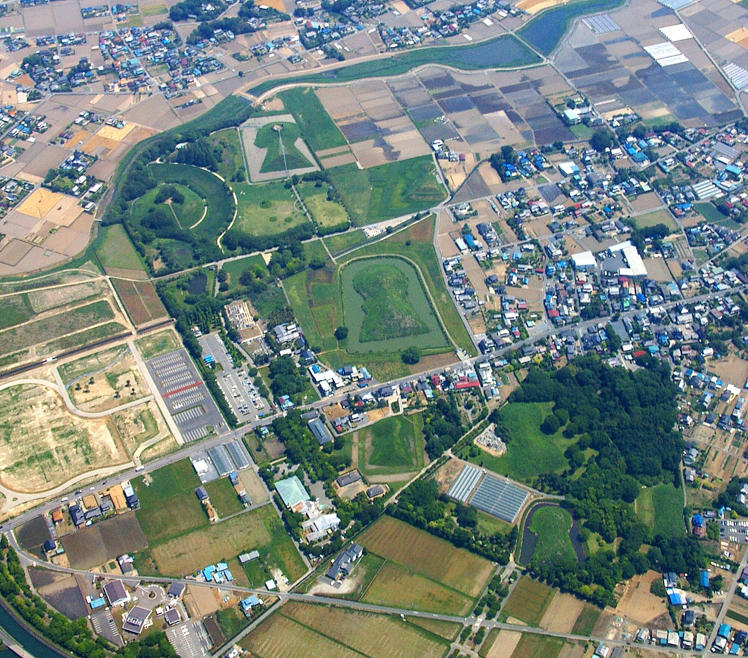The Sakitama Kofun Cluster |
Sakitama Kofun Cluster
About the Kofun Period
From around the middle of the third century to the seventh century, tombs with large mounds were constructed throughout the Japanese Archipelago. These ‘Kofun’, or burial mounds, were so prolific that the period in history when construction was at its height is referred to as the ‘Kofun Period’, also known as the Tumulus Period, or the Great Burial Period.
Burial mounds varied greatly in shape and size, with each particular style having its own name: ‘Zenpo-koen-fun’ for keyhole-shaped mounds, ‘En-pun’ referring to round mounds, and square mounds known as ‘Ho-fun’.
The biggest burial mound in Japan, at 486 meters, is the Daisen-ryo Kofun located in Osaka Prefecture. There are also notably large burial mounds in Nara and Osaka Prefectures of the Kinki region in west Japan, giving rise to the belief that the importance of the Kinki region as a political center developed during the Kofun period.
The biggest burial mound in Japan, at 486 meters, is the Daisen-ryo Kofun located in Osaka Prefecture. There are also notably large burial mounds in Nara and Osaka Prefectures of the Kinki region in west Japan, giving rise to the belief that the importance of the Kinki region as a political center developed during the Kofun period.
About the Sakitama Kofun Cluster
It was in the late fifth century, some time after the beginning of the Kofun Period, when giant keyhole-shaped burial mounds started to emerge in Sakitama. The unique keyhole-shape design, as well as elaborate grave goods buried in the tombs, hint at some kind of political relationship having been established between the Kinki region and Sakitama. After a construction period of around 150 years, more than 40 burial mounds, both large and small, once dotted the landscape around Sakitama. Now, however, only nine large mounds remain relatively in their original state.
As excavation and research are still underway on the Sakitama burial mounds, or Sakitama Kofun Cluster as it is known, new findings are expected.
To map
|

